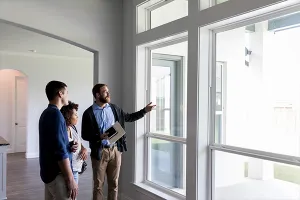While uncertainty persists regarding the impact of tariffs and global trade tensions, the Federal Reserve has chosen to keep interest rates steady. The U.S. economy hit a bit of a speed bump — GDP slipped slightly as businesses and consumers rushed to buy goods ahead of expected tariffs, widening the trade deficit and weighing on growth. Still, the job market remains solid, offering some reassurance amid the mixed economic landscape. The outlook remains uncertain, but signs indicate a gradual improvement in some commercial real estate sectors for the remainder of the year.
Office demand continued to lag in April, keeping vacancy rates at record highs, though some progress is emerging in select markets. The retail sector remained tight, with limited new supply. Industrial vacancies continued to climb, contributing to a deceleration in rent growth. Meanwhile, the multifamily sector remained robust, with demand near the peak levels last seen in 2021. Below is a summary of the performance of each major commercial real estate sector in April 2025.
Office Properties
Office demand weakened again in April after a brief improvement in March, with net absorption turning negative and the vacancy rate rising to 14%. Rent growth remained flat at around 1% amid tenant caution. Class A offices maintained positive annual absorption but saw vacancies rise to 20.3%. Class B performed relatively better, with slower vacancy growth and stronger rent gains at 1.3%. Class C continued to struggle. Regionally, Boston and Los Angeles posted the largest losses, while San Francisco’s outflows slowed. New York rebounded sharply, swinging from -5 M SF to +6M SF over the past year.

Multifamily Properties
The multifamily market is stabilizing, with annual net absorption up 22% to over 544,000 units. Although construction is down 30% from last year, new supply continues to outpace demand by 16%. Vacancy remains steady at 8.0%, while rent growth is modest at 1.1%. Class A properties still report the highest vacancy rates, though they improved by 0.7 percentage points; Class B units led the market in absorption. Rent trends vary widely across regions—rents fell by more than 4% in Austin, while markets like South Bend, IN, and Shreveport, LA, posted gains well above the national average. Major metros such as Dallas, New York, and Atlanta each absorbed over 20,000 units, signaling solid demand even in high-cost areas.

Retail Properties
Retail is cooling as e-commerce and post-pandemic shifts weigh on demand. Rent growth decelerated to 1.8%, though tenants are still competing for prime space. General retail accounted for nearly all positive absorption, while neighborhood centers saw losses and malls posted net vacancies, offset by demolition. Vacancy inched up to 2.6% - the first increase in nine quarters. Power and neighborhood centers led rent gains, while Raleigh and Norfolk saw the strongest metro-level increases. Dallas and Houston led in absorption, while Los Angeles reported the largest net loss.

Industrial Properties
The industrial sector is recalibrating after experiencing strong growth in both demand and supply over the past few years. Demand is strong, but can’t keep up with the new supply, which is pushing vacancy rates higher. Rent growth slowed to 2.1%, but remained above that of other sectors. Logistics remains strong, but flex space lags. Savannah, GA, topped all markets in absorption, while Los Angeles led in vacancies.

Hotel/Motel Properties
As of April 2025, the hospitality sector remains stable. Hotel occupancy stands at 63.1%, which is still 2.9% below pre-pandemic levels, largely due to the prevalence of remote work. However, profitability has rebounded, with average daily rates up 22% to $160 and RevPAR rising 17% to $101 compared to April 2019.










